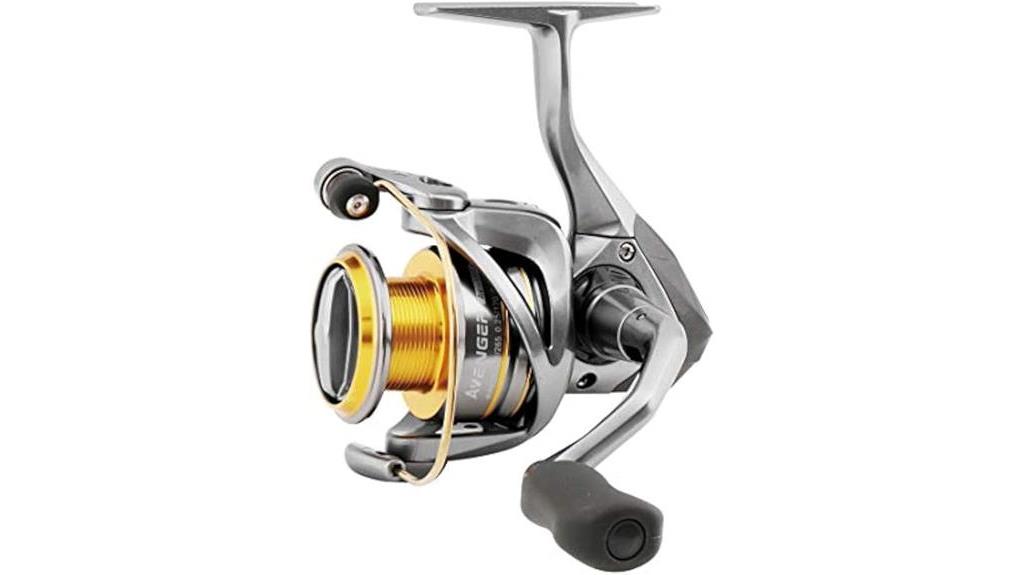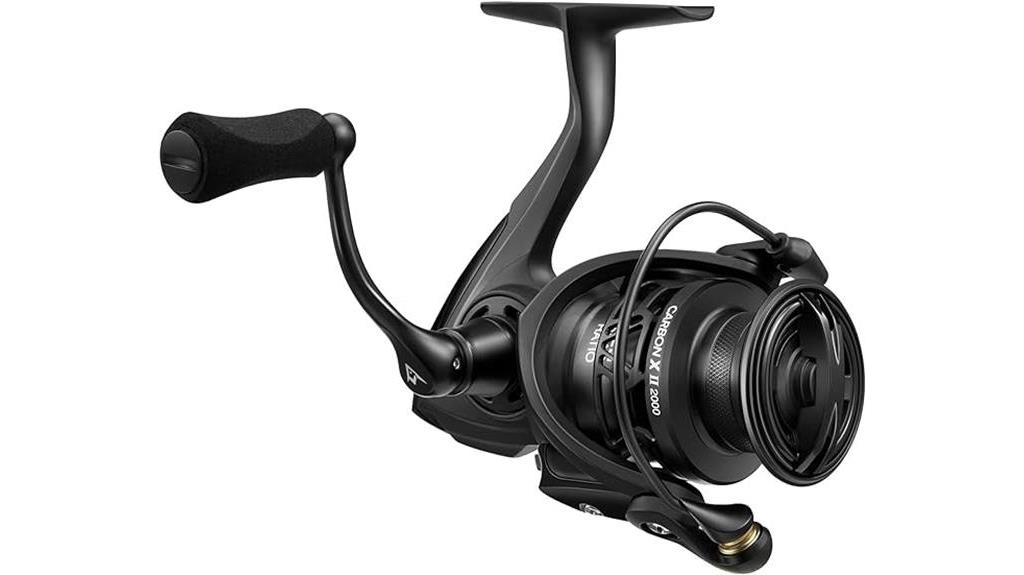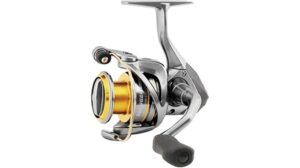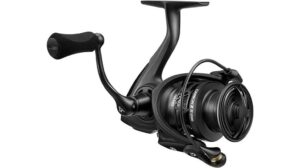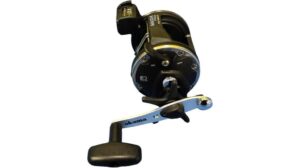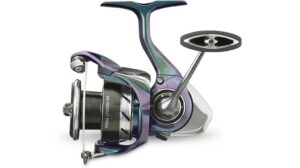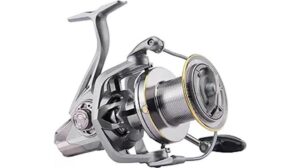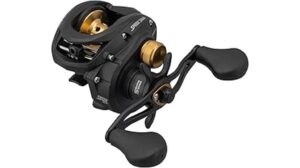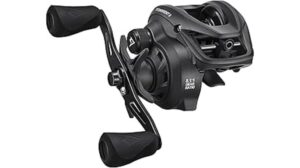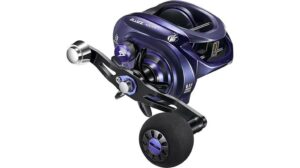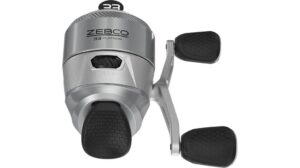When choosing the best fishing rod, we need to take into account several key factors. First, we'll determine the type of rod that suits our fishing style, such as spinning, baitcasting, or fly rods. Next, we'll examine the rod's materials and construction, which affect its sensitivity and durability. Length and action are essential for casting distance and fish handling, while power and sensitivity impact our ability to detect bites and set hooks effectively. We'll also evaluate the reel seat and guides for comfort and performance. Finally, we'll balance our budget with brand reliability. By understanding these elements, we can make an informed decision that enhances our angling success.
Types of Fishing Rods
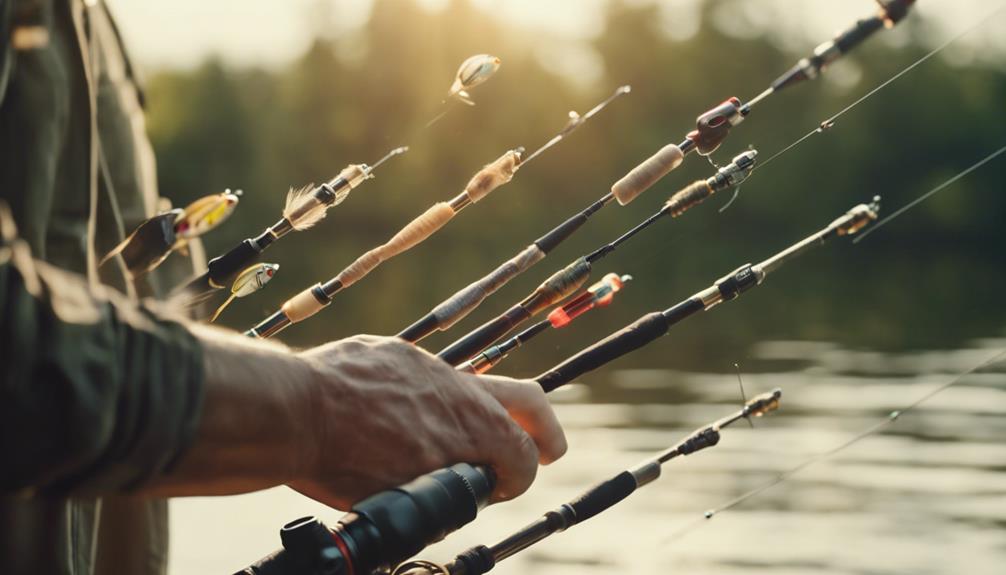
Exploring the various types of fishing rods is essential for anglers seeking to optimize their fishing experience. We'll investigate the primary categories: spinning rods, baitcasting rods, and fly rods. Each type serves specific purposes and techniques. Spinning rods are versatile and user-friendly, baitcasting rods offer precision and power, while fly rods are designed for the artful presentation of lightweight lures. Understanding these differences will help us make informed choices.
Rod Materials and Construction
Let's explore the critical aspects of rod materials and construction, which greatly influence a fishing rod's performance, durability, and suitability for various angling scenarios. We'll investigate the properties of common rod materials like graphite, fiberglass, and composites. We'll also examine how blank construction, guide quality, and handle design impact rod sensitivity, strength, and comfort. Understanding these factors will help us make informed choices when selecting our ideal fishing rod.
Length and Action
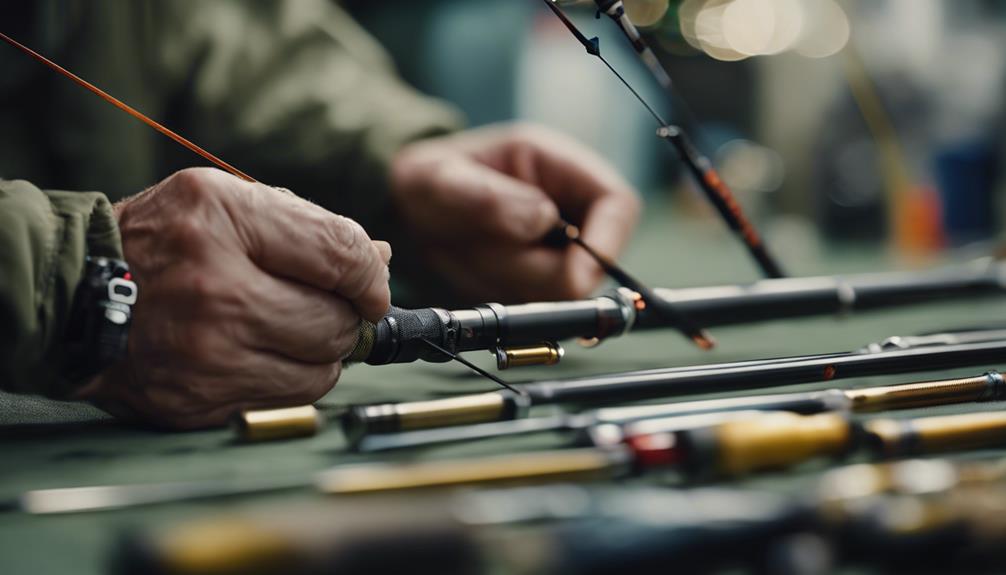
We'll explore two essential factors that greatly impact a fishing rod's performance and functionality: length and action. These elements play a vital role in determining casting distance, accuracy, and the types of fish you can target effectively. Let's break down the typical rod lengths and actions to help you make an informed decision:
| Length | Action | Best For |
|---|---|---|
| Short | Fast | Precise casting, jigging |
| Medium | Medium | Versatile, all-around use |
| Long | Slow | Long casts, big fish |
Power and Sensitivity
When it comes to selecting the ideal fishing rod, two essential factors we can't overlook are power and sensitivity. These attributes work in tandem to enhance our angling experience. Power refers to the rod's strength and ability to handle different fish sizes and weights. Sensitivity, on the other hand, allows us to feel even the slightest nibbles and movements, vital for detecting bites and setting hooks effectively.
Reel Seat and Guides
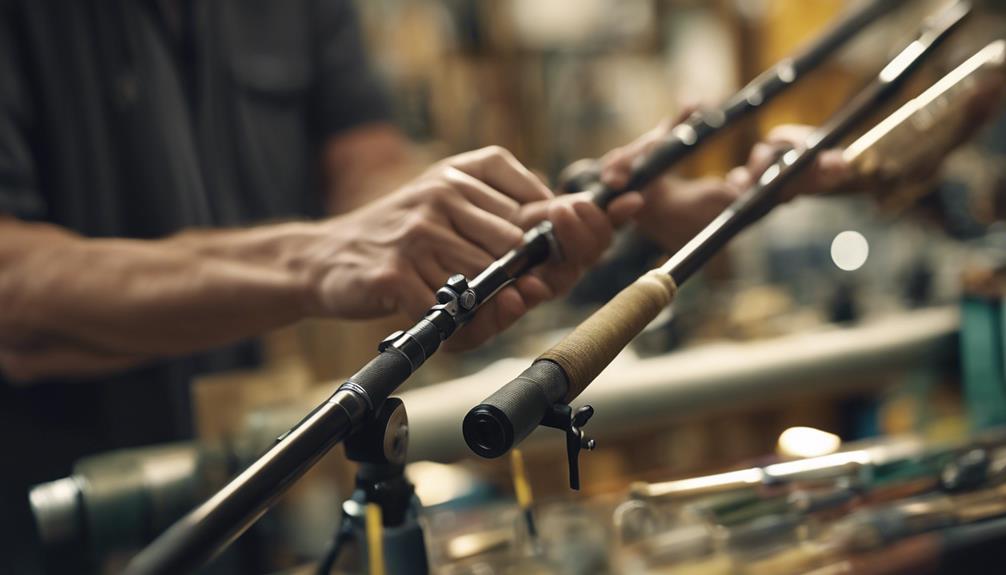
Having covered power and sensitivity, we'll now examine two critical components of a fishing rod: the reel seat and guides, which play a key role in both the rod's performance and the angler's comfort. The reel seat securely holds the reel in place, while guides direct the line along the rod. Together, they affect casting accuracy, line control, and overall fishing experience. We'll explore their materials, designs, and impact on rod functionality.
Budget and Brand Considerations
Budget constraints and brand preferences often play a significant role in the rod selection process for anglers of all skill levels. We've found that quality rods can be found at various price points, but higher-end brands typically offer better materials and craftsmanship. It's essential to balance our budget with our fishing needs, considering factors like frequency of use and target species. Well-known brands often provide reliability and customer support, which can be invaluable for serious anglers.
Conclusion
We've explored the key factors in selecting the ideal fishing rod. By considering rod types, materials, length, action, power, and components, we've provided a framework for making an informed decision. It's essential to balance these elements with your specific needs and budget. Remember, there's no one-size-fits-all solution in fishing rod selection. Our analysis should serve as a guide, but personal experience and experimentation will ultimately refine your choice.

